#vlad the impaler icons
Text



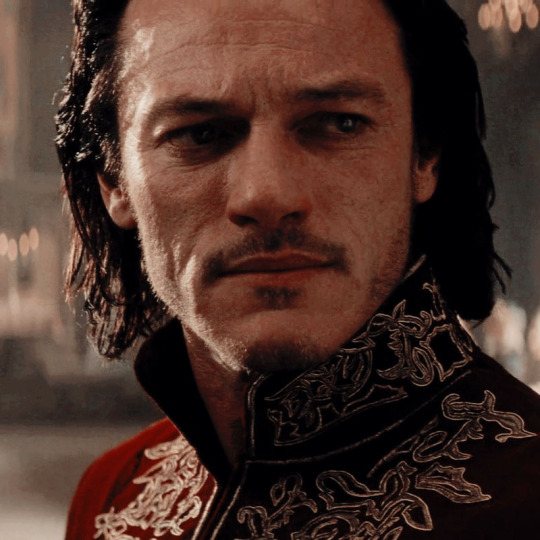





#luke evans#luke evans icons#vlad iii#vlad iii icons#vlad the impaler#vlad the impaler icons#vlad țepeș#vlad țepeș icons#psd icons#icons with psd#dracula untold#dracula untold icons#movie#movie icons#actors icons#actors
136 notes
·
View notes
Text
DRACULA SMACKDOWN ROUND 1 MATCH 1: Vlad the Impaler (Romanian History) vs. Jeremi Wiśniowiecki (Polish History)

PROPAGANDA FOR VLAD:
"Ok, so he’s not an actual vampire, and when it comes to cruel leaders from Romania he’s definitely topped by Ceaușescu, but I think he deserves a chance to fight all these fictional demons loosely inspired by him"
PROPAGANDA FOR JEREMI:
“he is basically the polish equivalent of vlad the impaler in that he was a warlord prince that impaled people a lot. and also i've heard that he was thought to have some sort of deal with the devil and all that. at least that's what i read in "by fire and sword" by henryk sienkiewicz. he looks cool in portraits but had a loser son who became king of poland”
#jeremi wisniowiecki#vlad the impaler#vlad dracula țepeș#vlad tepes#romanian history#polish history#dracula smackdown#dracula#dracula daily#gotta go for the icon himself here
8 notes
·
View notes
Text
How To Write Vampires With An Original Twist

Mythical creatures are an essential part of the fictional scene, but the same creatures have been used so many times that these creatures now often seem redundant and boring in fiction. This is why I've started a new blog series: How To Create Original Mythical Creatures. I'm kicking off this series with vampires!
Join me as we dive into the world of vampires, from their mythical beginnings to their modern-day interpretations, and learn how to write them effectively in your own narratives.
Origins of Vampires
Vampires have a rich and diverse history rooted in ancient folklore and legends. Across various cultures and civilizations, tales of bloodsucking creatures have emerged, each with unique characteristics and behaviors.
One of the earliest known vampire myths comes from ancient Mesopotamia, where stories of blood-drinking demons known as Lilitu or Lamashtu date back to around 3000 BCE. These entities were believed to prey on humans, particularly targeting children and pregnant women.
In ancient Greece, the Lamia was a mythical creature often depicted as a female vampire who lured and devoured children. Similarly, in Roman mythology, the Strix or Strigoi were vampiric entities that fed on blood and flesh.
Moving forward in history, Slavic folklore introduced the concept of the Upyr, a vampire-like creature that rose from the dead to feed on the living. These early depictions of vampires often portrayed them as revenants or undead beings with a thirst for human blood.
Modern-Day Vampires: Where Were They Originated?
The modern concept of vampires, as we commonly know them today, took shape during the European Middle Ages and the Renaissance. Legends of vampires emerged in Eastern Europe, with notable figures like Vlad the Impaler contributing to the folklore. Vlad's reputation for cruelty and his association with impaling enemies on stakes led to the creation of the vampire archetype, inspiring Bram Stoker's iconic character, Count Dracula.
From ancient Mesopotamia to medieval Europe, vampire lore has evolved and adapted, weaving its way into popular culture and literature. Understanding the origins of vampires provides writers with a rich tapestry of mythology to draw upon when crafting their own bloodsucking creatures.
I wanted to go into more detail regarding the Lamashtu and Lamia since they’re not as well known as their Slavic and European counterparts, but unfortunately, that would deviate from the purpose of this blog.
The Evolution Of Vampiric Appearances
Before we proceed with this section, it's crucial to clarify that the mythical creatures and beings discussed in this blog are not direct representations of ancient vampires. Instead, they serve as inspirations for the concept of vampires and share certain attributes with our modern-day depictions, including blood-feeding, pale skin, human-like appearance with some animalistic features, and so on.
Vampiric Creatures In Mythology
In ancient mythology, vampiric entities were not always depicted as the suave, charming figures we see in modern vampire tales. Instead, they often embodied primal fears and monstrous traits.
Lamia: In Greek mythology, Lamia was a terrifying creature depicted as a woman with a serpentine lower body. She was known for her insatiable hunger for children, often depicted as a child-eating monster. Lamia's appearance combined elements of human and serpent, emphasizing her monstrous nature and predatory instincts.
Lamashtu: In Mesopotamian mythology, Lamashtu was a malevolent demon who preyed on pregnant women and newborns. She was depicted with a fearsome appearance, often described as having the head of a lion, the body of a donkey, and bird-like talons. Lamashtu's grotesque features and destructive tendencies reflected ancient beliefs about the dangers of childbirth and infancy.
Lilitu: In Mesopotamian and Jewish folklore, Lilitu or Lilith was often associated with nocturnal demons or spirits. She was depicted as a seductive, winged demoness who preyed on men and newborns. Lilitu's appearance varied across different myths but often included features like wings, long hair, and sometimes talons, emphasizing her otherworldly and dangerous nature.
Strix: In Roman and Greek mythology, the Strix was a bird-like creature or vampiric owl associated with dark omens and death. It was believed to be a shape-shifting creature that could transform into a woman or an owl. The Strix's appearance combined avian and human features, instilling fear and dread in those who encountered it.
Strigoi and Upyr: In Eastern European folklore, Strigoi and Upyr were blood-sucking undead creatures similar to modern-day vampires. Strigoi were believed to be restless spirits or revenants that returned from the dead to torment the living. Upyr, on the other hand, were vampire-like beings with sharp fangs and a penchant for drinking blood. Both creatures were depicted as pale, gaunt, and often with elongated canines, reflecting their predatory and undead nature.
Medieval Depictions: Shift in Appearance
During medieval times, the depiction of blood-sucking mythological creatures underwent a transformation, shifting from monstrous and terrifying to more humanoid and relatable appearances. This change in portrayal can be seen in various aspects of their physical features:
Teeth: Originally depicted with long, sharp fangs or talons for blood-drinking, medieval depictions often featured more subtle fang-like teeth or no visible teeth at all, aligning with the concept of vampires being able to blend in with humans.
Skin: While ancient vampires were often described as monstrous and otherworldly, medieval vampires were portrayed with paler skin to signify their undead nature but without extreme deformities or monstrous features.
Appearance: Medieval vampires were often depicted as more human-like in appearance, with regular clothing and a less monstrous demeanour. This shift allowed for more nuanced storytelling and exploration of themes like temptation, desire, and the struggle between humanity and monstrosity. This is also what birthed the romanticization of vampires.
Mythological Vampire vs Modern-Day Vampire
Mythological vampires, rooted in ancient folklore and mythology, were often depicted as malevolent spirits or creatures with supernatural powers. These creatures varied widely across different cultures, from the Lamia and Lilitu in Mesopotamian mythology to the Strix in Roman and Greek folklore, and the Upyr in Slavic tales.
These ancient vampires were not always the suave, charismatic beings we see in modern media. Instead, they were often portrayed as terrifying and monstrous, with features that reflected their otherworldly nature. For example, the Lamia was described as a demonic woman with the ability to transform into a serpent, while the Lilitu were associated with storm demons and fertility spirits.
In contrast, modern-day vampires, especially those popularized in literature and film, have undergone significant transformation. They are often depicted as sophisticated and alluring, with a penchant for romance and drama. Authors and filmmakers have humanized vampires, giving them complex personalities, tragic backstories, and even moral dilemmas.
While modern vampires still retain some traditional attributes such as a need for blood and sensitivity to sunlight, their portrayal has evolved to include a wide range of characteristics and abilities. This shift has allowed for more diverse and nuanced storytelling, exploring themes of immortality, love, redemption, and the eternal struggle between good and evil.
Which Option Is Better For Your Novel?
When deciding which type of vampire to incorporate into your story, consider the tone and themes you wish to explore. Mythological vampires offer a darker and more primal essence, rooted in ancient fears and superstitions. On the other hand, modern-day vampires provide a canvas for exploring human emotions, relationships, and societal issues through a supernatural lens.
Ultimately, the choice between mythological and modern vampires depends on the narrative direction and atmosphere you want to create. Both types offer unique storytelling opportunities, allowing you to craft captivating tales of mystery, romance, horror, or even philosophical introspection.
Research and Resources
Writing about mythical creatures like vampires requires a solid understanding of folklore, mythology, and literary traditions. Here are some resources and research methods to help you delve into the world of vampires and other mythical beings:
Books and Literature
Start by exploring classic works of literature that feature vampires, such as Bram Stoker's "Dracula," Anne Rice's "The Vampire Chronicles," and Stephenie Meyer's "Twilight" series. These novels not only showcase different interpretations of vampires but also delve into the cultural and historical contexts surrounding these creatures.
Mythology and Folklore
Dive into ancient myths and folklore from various cultures to uncover the origins of vampire legends. Look into Mesopotamian, Greek, Roman, Slavic, and other mythologies to discover different vampire-like entities and their characteristics.
Research Journals and Articles
Academic journals and articles can provide valuable insights into the evolution of vampire folklore, the psychological aspects of vampirism, and the cultural impact of vampire mythology. Explore journals in folklore studies, literary analysis, and cultural anthropology for in-depth information.
Online Resources
Utilize online platforms such as mythology databases, folklore websites, and literary forums to gather information and engage in discussions about vampires. Websites like The Vampire Library, Vampire Empire, and Vampire Rave offer a wealth of resources for vampire enthusiasts and writers.
Historical Research
Delve into historical records, archival documents, and historical accounts related to vampire hysteria, vampire burials, and vampire folklore in different regions. Understanding the historical context can add authenticity to your portrayal of vampires.
Interviews and Expert Opinions
Consider reaching out to folklore experts, historians, and scholars specializing in vampire mythology for interviews or consultations. Their insights and expertise can provide valuable perspectives on vampire lore and storytelling.
Creative Exploration
Don't hesitate to let your imagination roam while exploring vampire mythology. Experiment with creating your own vampire mythology, incorporating unique traits, powers, and origin stories for your vampires.
By combining thorough research with creative exploration, you can develop rich and compelling portrayals of vampires in your writing. Remember to stay open to diverse interpretations and adaptations of vampire folklore, allowing room for innovation and originality in your storytelling.
I hope this blog on How To Write Vampires With An Original Twist will help you in your writing journey. Be sure to comment any tips of your own to help your fellow authors prosper, and follow my blog for new blog updates every Monday and Thursday.
Looking For More Writing Tips And Tricks?
Are you an author looking for writing tips and tricks to better your manuscript? Or do you want to learn about how to get a literary agent, get published and properly market your book? Consider checking out the rest of Haya’s book blog where I post writing and publishing tips for authors every Monday and Thursday! And don’t forget to head over to my TikTok and Instagram profiles @hayatheauthor to learn more about my WIP and writing journey!
#hayatheauthor#writing community#haya's book blog#writing tools#writing advice#writer things#writer community#haya blogs#writers on tumblr#writing life#writing techniques#writing stuff#writer tools#writers of tumblr#writer blog#women writers#writer stuff#writer advice#writer tips#creative writing#novel writing#writing vampires#vampire#vampire books#writerblr#writing corner#writing inspo#ya writing advice#writing tips and tricks
147 notes
·
View notes
Text
Round Three: Bajadasaurus vs Australotitan
Bajadasaurus pronuspinax

Artwork by @i-draws-dinosaurs, written by @i-draws-dinosaurs
Name meaning: Downhill reptile with forward-bent spines
Time: 145 to 132.9 million years ago (Berriasian to Valanginian stages of the Early Cretaceous)
Location: Bajada Colorado Formation, Argentina
Initially published in 2019, Bajadasaurus became pretty much instantly popular because of its bizarre, forward-pointing double mohawk of spines on its neck. The only other dinosaur like it is Amargasaurus, a dicraeosaurid sauropod that was thought to be entirely unique in its neck spines. The initial hypothesis in the paper describing Bajadasaurus was that the front-facing spines would have been passive defense structures that could impale predators that tried to make a charge at the otherwise-vulnerable head. However, a recent paper on Amargasaurus in 2022 has potentially turned that idea on its spiny head, suggesting that based on the interior bone histology of the spines as well as the outer texture Amargasaurus’ multi-pronged neck actually supported some sort of fleshy sail instead! The study didn’t include Bajadasaurus in its analysis, but based on its similarities to Amargasaurus it’s reasonable to assume that this forward-swept spine was also more of a sail, turning a deadly defensive fortification into a showy display feature!
Australotitan cooperensis

Artwork by Vlad Konstantinov, written by @i-draws-dinosaurs
Name meaning: Southern titan from Cooper Creek
Time: ~95 million years ago (Cenomanian to Turonian stages of the Late Cretaceous)
Location: Winton Formation, Australia
Nicknamed “Cooper” by its discoverers in 2005, Australotitan was big news on the Australian dinosaur scene for years before its discovery because it was clear this dinosaur was Huge. It took 5 years of preparation and 10 years of study and reconstruction before Cooper was finally published in 2021, and secured its official title as the largest Australian dinosaur known to science! While exact weight measurements for titanosaurs are extremely difficult, it fits into the same size class as other newly-famous giants like Dreadnoughtus and Patagotitan. The bones themselves show signs of being trampled over by a convoy of smaller sauropods that left a 100 metre fossil trackway over the site. Honestly, the disrespect to an icon like Cooper!
#dmm#dmm rising stars#dinosaur march madness#dinosaurs#birds#palaeoblr#birblr#paleontology#march madness#bracket#polls#bajadasaurus#Australotitan#round three
99 notes
·
View notes
Text
CD is coming to Prague on 4.04.2024


Have you always wondered, "How did Vlad the Impaler become an icon of Romania"? If so, the solution may be within reach… 🤔
On April 4, the Department of World History of the Faculty of Arts of Charles University in cooperation with the Department of Ethnology and Central European and Balkan Studies of the Faculty of Arts of Charles University and the Romanian Cultural Institute in Prague/ Institutul Cultural Român de la Praga will organize a lecture on the "Dracula" theme. Two renowned experts, Dr. Adrian Gheorghe from the University of Munich and Dr. Albert Weber from the University of Regensburg, will speak on the topic. 😁
📅 4.4. 2024
🕜12:30-14:00
📍 P 201 (main building of the Faculty of Arts, Palach Square)
#corpus draculianum#dracula#vlad the impaler#history#romania#vlad tepes#wallachia#vlad dracula#youtube#corpusdraculianum#dracula daily#prague
14 notes
·
View notes
Text
It's Fictional Throwdown Friday!
This Week's Fighters...
Alucard vs Alastor!
Conditions:
Alucard does not have Schrodinger. Alastor as of Season 1. Speed Equalized.
Scenario:
After D.H.O.R.K.S finds definitive proof that hell is real and demons exist, the Hellsing Organization decides to take preemptive measures to prevent a full scale invasion by send Alucard down to tear the place up.
Analysis: Alucard
Vampires. Some of the oldest monsters dreamed up by mankind. Ever since Bram Stroker's classical novel, we've seen numerous iterations of his iconic vampire king. None, however, can claim to be as deadly or as terrifying as Alucard, the undying enforcer of Hellsing.
Vlad Dracula was born as a tormented slave, spending most of his life being horrifically abused by his masters. When God refused to answer his prayers for mercy, Dracula decided to take life into his own hands. Becoming a vicious warlord, Vlad would impale countless thousands in his campaign to conquer all of his enemies, earning the moniker Vlad the Impaler. As he was to be executed, Vlad drank some blood off the grounds of the battlefield, forsaking his humanity and becoming an undead monster of the night.
Count Dracula's reign seemed unending, but eventually his bloody crusade was brought to heel by vampire hunter Abraham Van Hellsing. Respecting the level of strength and resolve that brought him to herl, Dracula swore loyalty to the Hellsing family name, becoming Alucard, the undying enforcer of the Hellsing Organization. A monster who hunts other monsters.
Alucard is quite easily the strongest vampire in the world. Alucard has killed thousands of monsters and millions of people over the course of his hundreds of years of undeath, not helped by Hellsing running experiments on him to make him even stronger. Even by the standards of his series, Alucard is less a vampire or moreso a vampire shaped Lovecraftian nightmare, and the most damning evidence of that is in his shapeshifting.
While Alucard does possess organs like a human does, he's in actuality made of a shadow-like substance that he can morph into any shape he desires. He can freely change his clothes, age, gender, and even sprout extra limbs. And if he encouters a particularly tough or tasty looking foe, he can shapeshift a giant dog monster out of his body, lovingly named Baskerville, to devour his prey whole and alive, keeping their mind, body, and soul trapped inside him forever.
What's more, while regular vampire can regenerate from getting shot to pieces, Alucard's is on a whole nother level. Decapitation, dismemberment, getting shredded with lead, or getting cut clean in half, Alucard comes back from it all. This is because Alucard has something his fellow vampires don't.... the souls of millions of his victims wriggling around inside him. Alucard has personally drank the blood of over 2 million people over the course of his life, absorbing their souls and memories in the process. Whenever Alucard takes a blow that would otherwise kill him, he uses up one of these souls to heal him from whatever did him harm. As such, Alucard in most fights just stands their with a shit eating grin while his opponents helplessly tear into him. He'll grow back whatever you do to him and your souls will replenish his stock just fine when you're done.
Don't think that this means he can't rip into straight back. Alucard carries two massive handcanons longer than the average man's forearm, the .454 Casull and the Jackel, powerful enough to blast any vampire to pieces, while the silver bullets helpfully keep them from regenerating. He's a crack shot with them too, as with his Third Eye ability, he can enhance his senses to the point where he can hit bullseyes a kilometer away and see through any illusions you might cast to distract him. And if you're too far away for even that, Alucard can drag you back into range with telekinesis, which is powerful enough to lift an aircraft carrier out of the ocean and bring him the blood of everyone in London for him to drink. That's right, he drank London.
He even covered London in a massive cloud of fog, a feat that would generate roughly 475 kilotons of TNT.
Source:
Obviously, this awe inspiring power needs to be controlled. As such, Alucard operates under 6 restriction levels. Levels 6 through 4 are for decimating your average, everyday vampires. 3 through 1 are when he starts getting serious, breaking out Baskerville, growing wings, and tearing you to shreds with multiple limbs. He even breaks out the powers he doesn't use that often, casting illusions to deceive his enemies.
Level 0 is for when he wants to end the world.
Upon activating Level 0, Alucard unleashes all of the souls in his arsenal as a sea of blood soaked zombie warriors to destroy everything in their path. If any of those souls happen to have powers, such as the aforementioned Rip Van Winkle, than the get to use them in his name, a true member of the Count's army.
However, while Alucard is at his strongest in this form, it's also his most vulnerable state. Nanely, he can't regenerate from fatal wounds anymore. If one were to destroy his heart in this form, Alucard will die permanently. The man has admitted it himself.
Moreover, Alucard is supremely overconfident, to the point where he often just sits their laughing his ass of as he's torn to shreds. This overconfidence was once exploited by Schrodinger, a, um, Nazi German catboy who exists everywhere simultaneously. That was a sentence.
See, Schrodinger cannot die so long as he can recognize his own existence, as he is simultaneously alive and dead at all times. But, when Alucard inadvertently ate Schrodinger's soul, Schrodinger wasn't able to recognize himself anymore in the sea of souls within Alucard's body, causing Schrodinger, and Alucard by extension, to cease to exist.
Alucard, however, still lived. Even when reduced to absolutely nothing, Alucard was still aware. So, he simply spent the next 30 years killing all the millions of souls inside of him so he could return home to his master's side, undoing his own non-existence and gaining Schrodinger's powers in the process.
The fact that Alucard could survive and kill his other souls even while not existing, implies that even erasing Alucard's entire body entirely might not be enough to bypass his regeneration. If Schrodinger's powers weren't actively keeping him nonexistent, Alucard may be able to come back under his own power from being erased entirely.
Alucard's one true weakness is his longing for death. His biggest dream is that one day, a worthy human warrior will come to end his undeath for good. But, until then, he'll keep slaughtering monsters in his master's name. So, be weary all you who stalk the night, for when Alucard hears your screams, all Hell shall Sing.
Analysis: Alastor
Hell. The final punishment. The ultimate torture. A landscape of fire and brimstone where all your greatest fears and pains torment you for all eternity. A never-ending gang war where any day could be your last and the only way to truly survive is either carve out your own territory or to sell out your servitude to one of the nefarious Overlords waging to control Hell's Pride Ring.
As such, it might suprise you that some never wanna leave. Why would they when Hell offers you all the slaughter and mayhem you could ever possibly desire? Such is the philosophy of Alastor the Radio Demon.
Alastor was a radio talk show host who moonlighted as a serial killer in life who was sent to Hell after being mistaken for a deer and shot by a hunter while burying a body. When he awoke in Hell, he delighted in the opportunity to openly relish in his sadistic tendencies, quickly rising up to become one of Hell's scariest Overlords. Overlords are sufficiently powerful Sinners who are strong enough to carve out their own territory in the Pride Ring, where all Sinners reside and wage war on each other. Broadcasting the screams of his victims over his radio show before cooking them up and devouring them. Even without the use of holy weapons to destroy their souls and permanently kill them, that fate is enough fo make any Sinner terrified.
Come the modern day and Alastor has grown bored of engaging in his worst desires. There was no variety anymore. No sport. So, for reasons known only to himself, he vanished for seven years, returning only when the Princess of Hell herself announced her latest project: the Happy Hotel.
Alastor would enlist himself to help in her cause. Not out of any guilt or moral code, but to satiate his never ending boredom. Or so he says. Behind that sharp unshakable grin, Alastor's true motivation is a mystery. All we do know is whatever agenda he's pushing... might not even be his own.
Regardless, Alastor is a rather private person, with a strange, inscrutable moral code. Any who try to follow the strings he's tied to may just find that grin to be the last thing they see.
Alastor is one of Hell's most powerful Overlords, with a plethora of terrifying powers. He's impossible to record on modern cameras, he can summon and manipulate an army of shadows, inlcuding even his own, and can grow into a colossal giant to ripe people apart and devour his victims whole. His tendrils are powerful enough to rip apart Sir Pentious's airship and he can create explosions big enough to nearly dwarf the hotel itself.
Notably, he's far stronger than some of his fellow Overlords. Take the TV Demon Vox for instance, who is powerful enough to destroy volcanos, requiring roughly 182 kilotons of TNT.
Source:
None of this however, competes with Alastor's most terrifying ability. His power over souls. Should someone attempt to make a deal with him, they risk losing their soul to him, giving him completely control over them as his slave. He's conned fellow Overlords into falling for this ruse before, exploiting Husk's love of gambling to swindle him out of his free will. Notably, this makes him uniquely capable of potentially killing a fellow Sinner, as Sinners can keep coming back to life in Hell so long as they have their soul, no matter the damage.
But, despite this cunning mind and terrifying power, Alastor is not invincible. He's overconfident to a foolhardy degree, from deliberately trying to piss off Lucifer himself to battling Adam, the First Man, without even a holy weapon and nearly getting himself killed. It's possible this overconfidence is what led to him selling his own soul to an unknown party, playing the pawn in someone else's game.
Still, don't count Alastor out yet. Now that he's exploited Princess Charlie Morningstar's desperation for a "favor", he fully intends on finding a way out of his chains. Only then, will we see what the Radio Demon hides behind his shark toothed grin.
Stay tuned folks~
Throwdown Theme:
youtube
Throwdown Breakdown:
Overconfident maneaters with unshakable grins, but only one can come out alive.
Neither of these two are going to open up with their best out the bat. Both of them are just too overconfident for it. Even knowing full well he's fighting a demon serial killer from Hell, Alucard's still going to grin and deliberately tank everything Alastor throws at him, laughing maniacally as he's torn apart over and over. That's just how he acts. Alucard relishes the fear in his victims as they struggle to kill him.
As for the AroAce community's resident cannibal, he'd be acting much the same. Alastor is far from an idiot, but he's also overconfident to a fault. He'd relish the opportunity to slaughter someone truly powerful once he saw Alucard get right back up from getting torn in half. He does know to tailor his approach to suit the situation and would start fighting much more evasively once he saw Alucard's regeneration, anticipating that he's a powerful, dangerous opponent who could readily tear him up. That's not gonna stop him from egging Alucard on though.
Baskerville is an early win condition, potentially devouring Alastor whole if he isn't careful, but I do think Alastor would use his tendrils to restrict the giant mutt or be able to turn giant to avoid getting eaten in one bite. Of note, Holy Weapons in Hellsing do not work the same as holy weapons in Hazbin, so they wouldn't destroy Alastor's soul. Nor would they bypass his regeneration like they would a vampire's, as his comes from the soul directly. But, by that same token, Alastor doesn't have any way of quickly burning through Alucard's millions of souls either. His soul manipulating powers are limited to deal making from what we've seen and Alucard's not gonna buy into anything he'd offer.
Alucard can, however, get past the Sinner's immortality. Once he gets his hands on Alastor, he could drink his blood and devour his soul that way, leaving him with nothing to regenerate from. Then there's Level 0...
I'm kinda mixed on whether he'd use it here. On the one hand, Alastor is roughly 3x weaker than Alucard, so he might decide to stick to Level 1 for the sake of enjoying kicking Alastor's ass. He does enjoy terrifying and brutalizing monsters after all and Alastor's the exact kind of person he'd despise. A murderous beast whose forsaken his humanity for power. On the other hand, he's here to slaughter all of hell and Level 0's inherently very good for that. On the third hand, he might want to save it for much bigger threats and not waste his trump card on a (relatively) no name serial killer.
For those reasons, I kinda lean towards no. Which would likely solidify his victory as Alastor can't get past his extra lives quickly without it and Alucard only needs one bite to win. For the sake of argument, lets say he does use it. Alastor doesn't have many means of closing the distance to exploit the opening. The familiars far outnumber his shadow minions and going giant to rampage through them will only make himself that much easier to hit for the superpowered zombies. And that's on top of the blood wave and telekinesis likely keeping him at bay. His best bet would be to disappear as a shadow to ambush Alucard, but he'd only think of that if he knew Alucard was suddenly vulnerable now, which he likely wouldn't. He's more likely to use it to escape if anything.
Between these two grinning, sadistic monsters, Alucard will be the one to stop smiling.
This Throwdown's Winner is...

Alucard!
#fictional throwdown fridays#hellsing#hazbin hotel#alucard#alastor#he still doesn't clear though#lucifer and charlie unironically stomp alucard#also speed equalized was absolutely necessary to keep alastor from stomping#he scales to 90% lightspeed stuff#he could eat a whole chicken dinner in the time it takes alucard to blink#tis why that condition is there 9 times out of 10
9 notes
·
View notes
Note
What are the names of each alucard form?
The Many Forms of Alucard
For just the average shapeshifting, Alucard has shown to be capable of changing into bats, insects, snakes, a dog, or just large masses of darkness and shadow.

But when you say "forms", I am going to assume you mean the persona's Alucard takes on in his Control Art Restriction System, and other associated persona.
The Control Art Restriction System was designed by Abraham Van Hellsing as a sort of leash for Alucard. He is far too dangerous on his own, so his powers must be contained via six 'levels'. Each of these levels, like a safe, has a designated amount of power locked behind them, effecting Alucard's physical form as a result. We the viewers are not prevy to all of these states, becuase when Alucard sees it necessary to unlock the Control Art Restriction levels (or ask permission from his master), he's really an all-or-nothing kind of guy. The states we have observed are as thus:
Level 6: Referred to as "Count", is the most recognizable form for Alucard, as it is his default. He is often seen wearing is iconic red frock coat and large fedora, with a black pin up suit, long leather boots, white gloves, and somtimes his classic google sunglasses.

Levels 5-2: Unknown, possibly the same as Level 6 or 1.
Level 1: Referred to as "Nosferatu". This form is seen multiple times throughout the series, first when he is discovered by a preteen Integra, as well when fighting Luke Valentine, Tubalcain Alhumbra, Anderson and Walter. He wears a full body, black straight-jacket, with his level 6 white gloves.

Level 0: What fans have dubbed as "Vladcard". This form turns Alucard into his previous human-sefl, Vlad 'the Impaler' Dracula. He wears his 15th century Romanian armour, a tattered black cape and a large broadsword at his hip. And, as pointed out amusingly by Seras, he also has a mustache 🥸.

Other forms not associated with a particular level include:
Girlycard, where Alucard appears as a young girl with stright, long black hair, a white jacket and pants over a black button-up, and a white ushanka.

Bussiness Man (or Dripcard🫠), appears when Alucard travels to Rio with Seras and Pip. His air is gown long, and he wears a slick black suit, gray overcoat, black tie, red button-up shirt, black leather shoes, and his classic goggle sunglasses and white gloves.

For more Alucard info, I always trust in the work done by our fellow fans at https://hellsing.fandom.com/
118 notes
·
View notes
Text
Ateez's Full Storyline Explained - Update!
Masterlist
Given the recent release of the Epilogue, I've rethought almost every part of my previous theory, meaning there's a lot to go over so let's get going right away (as always, the original post was updated so check that out for the full theory):
I'd first like to say that all the information I’m referencing here comes from the MV, Prologue and Epilogue, Hongjoong’s Q&A shorts and the MV reaction video
Dimension-wise, we're in another dimension very close to the Z-Dimension where the Revolution has already ended but not quite so successfully, as we can see by the city up in smoke and rubble in the background

Since we've got Yunho sitting inside a ginormous, shattered Cromer, we can assume either (A) these guys themselves have already traveled through time and dimension to get here (which would align with what we see in the iconic Mnet livestage with the red and black outfits) and are now stuck until they found another one to take them back home - wherever that home may be or (B) this entire room is the remainder of the Black Pirates' hideout and the Cromer was destroyed by one of them before they were captured so it wouldn't fall into the hands of the government (which could mean one of them escaped to another dimension)
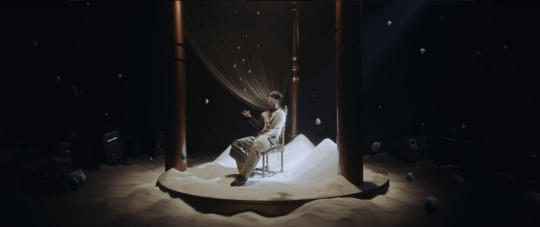
Going by the lyrics, they've already been here long before the Revolution and used to live as regular citizens in Strictland before they had their microchips removed by the Black Pirates - I'm largely basing that on the iconic "No more, keep control" and "No more, keep your soul" -> they want to be in charge of their own lives, to feel and have free thought as opposed to the mindless drones the chips had forced them to be

Another thing worthy of noting is that, as the bell rings, we can see Seonghwa glitch which could have several meanings: they've got hologram technology which helps them make public appearances in the daytime more safely OR (given the ominous vibes of the sound and the association with the bell) they're either not fully human (which would also explain the post-production added CGI glint we see in Jongho's eye at two separate points in the MV) or otherwise existing in this dimension on borrowed time.
Alternatively, the bell could also indicate that our protoganists are more powerful at certain points in time and this is a visualization of that power. As the moonphases affect the Cromer, they may also affect them.

Regarding the Black Pirate outfits we're seeing throughout the video: our protagonists here were freed by them, alongside all the other people we get to see in the plaza and abandoned mall, but without Ateez's help, they didn't manage to stay undetected so the government either captured or straight-up murdered them
Left behind and without guidance while everyone is praying for the Black Pirates return (see: the Prologue), our protagonists have now stepped up and are rebuilding the movement - though whether they're burning the Black Pirates' outfits as a funeral ritual, out of frustration and anger due to feeling abandoned... or because the tattered clothes were strung up that way by the government to scare off further acts of rebellion Vlad-the-Impaler style which would make this a symbol of defiance, is unclear


Regardless, many of the other citizens who were freed seem willing to join their cause and their current mission seems to be to take down this anti-gravity orb

I can only make a rather baseless guess as to what the purpose of these things is but since it's actively rising here, it seems to be something newly installed that's meant to rise above city-level
The central government presumably built and installed it so maybe it can send out some kind of pulse or signal to regain control over the population - after all, the chips seem to have only had the link cut but weren't removed so re-establishing the link could be possible as long as the hardware wasn't fully fried (which would've probably needed harsher, more painful for the skin interference but what the heck do I know about this world's technological advances)
Either way, to me, that would explain both the fear in the lyrics about returning to their prior state of being pre-awakening, as well as why San was so ready to risk it all to break this thing
Either way, we've got Yeosang bringing in the chains to tie this thing up

Based on the skyline compared to the one from the prologue, it seems like the thick smoke pillars might be originating from the crash sites of the other orbs which would mean they already brought down all the other ones successfully and have now reached their last stop

They wrap the chains around the orb, tie it up all nice and neatly (which must've been a pain in the ass to do since that thing is floating in mid air, makes lightweight shit in its vicinity float and is well, the shape of a super smooth ball) and all start pulling together up until everyone seemingly leaves San to finish the job by himself
To me, there could be multiple reasons for this: (1) it was always part of the plan (highly unlikely imo), (2) everyone but San lost hope this was gonna work out since they're already exhausted af from doing this several times before and don't seem to have made all that much progress and maybe they think they've already done enough since this is seemingly the last orb left, (3) San convinced everyone to leave as they were working/everyone but him got too scared to continue because Android Guardians or another government entity were underway and would've killed or captured them if they were caught
Either way, it all ends with the orb evaporating the moment it collides with San as if his existence somehow cancelled out the orb's. While this is very likely to be a creative decision since no one wants to see this human embodiment of sunshine get crushed to death, it could also mean San is still alive if he possesses abilities that go beyond a regular human's or if the orb isn't made up of regular matter/material.

Moving on to the Prologue and Epilogue:
Aside from what I already covered, there are also quite a few other things I want to bring up regarding what we get to see in these two bonus videos, starting with the numbers behind Hongjoong in the Prologue here (which were also pointed out by him in the Making Of video)

You can put these numbers (22152984) and decode them with A1Z26 in which case you'd get this (yes, I still use the Gravity Falls: Break the Code website for this kinda stuff - I refuse to be judged for it):

While this is rather nonsensical, it is quite close to "Bluebird" which would fit the lyrics but it's still just a lil bit unsatisfying since, properly encoded, it should have been "2-12-21-5-2-9-18-4", meaning they forgot a "1" twice.
Regardless, I couldn't find anything better - it can't be coordinates, there's no cypher like this for Hangul that I could find, and using Base64 only gets you "my8" which doesn't make too much sense but Ateez are 8 members so that's nice, I guess.
The first thing that pops up in my search results when I look up the numbers is "Buy 22152984 from Oxygen Electronics" by the way - shout out to life support machine parts you can order online (no affiliation, though I do hope they're an ethical company)
Regarding the numbers, I'll leave it at that for now but if I ever find something that makes more sense, I'll update this!

Ah yes, the mysterious blonde person that pops up toward the end of the Prologue and disappears in the blink of an eye as someone walks past
Seonghwa is the only one who takes note of them and, based on his neutral expression, it doesn't seem to be the first time he's seen them
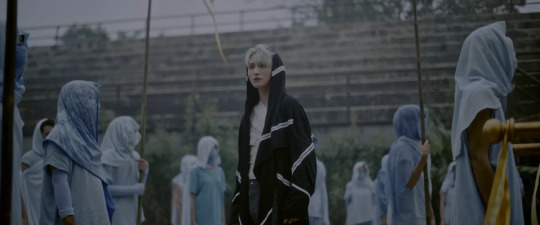
Are they the Witness? I do think so but we'll come back to it in a moment.
Skipping ahead to the Prologue uploaded yesterday, we're opening with a shot of the bluebird we've already gotten to see in the Prologue and which has also been referenced in the lyrics - it's a symbol of reclaiming freedom, of escaping your shackles, of finding your voice and using it. They've now made it. They've chosen freedom. They've chosen to fight.

The bird's path now guides Seonghwa through the abandoned mall where the orb was brought down and San was sacrificed. It whistles a lil tune and disappears near a lone white-clad figure we've seen before.

Last seen among a small group on the rooftop at the end of the MV, our blondie stands by themselves again, though the others aren't far as we'll soon see
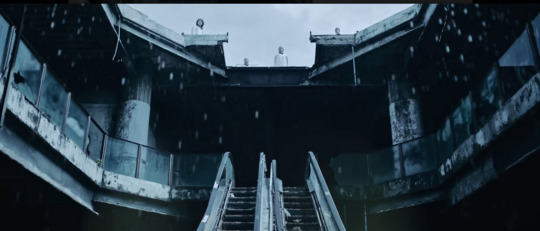
Since the mission is now over, Seonghwa let's his curiosity win and follows the figure up a dark staircase, letting his flashlight guide him
He finds the group of four from the rooftop standing in a dark room against the backdrop of the smoking skyline behind the large windows - they were waiting for him

A white flash, rolling thunder and they're gone. Just like after Yeosang broke the Cromer, we also got to witness the Cromer's powers here. This marks the third Cromer, meaning these four are from yet another dimension and they've now become Witnesses of our protagonists' achievements.
They also left behind a departing gift: a silver bracelet engraved with the words "Be Free"

Like A-Dimension's Seonghwa, it seems the blonde Witness has also gotten inspired by their dimension's version of the dancing girl (whom I theorize to be Left Eye's daughter) and they've now left behind this bracelet, hoping it'll inspire this dimension's Seonghwa the way it inspired them
142 notes
·
View notes
Text

forged in flame by nero. / a canon & verse - dependent portrayal of 𝙢𝙚𝙨𝙨𝙢𝙚𝙧 𝙩𝙝𝙚 𝙞𝙢𝙥𝙖𝙡𝙚𝙧 from 𝙚𝙡𝙙𝙚𝙣 𝙧𝙞𝙣𝙜. multi - para, novella, dialogue, and generally all formats of rp style. / NOT OPEN FOR SHIPPING OR NSFW OF ANY KIND. / this blog contains ( but is not limited to ) gratuitous themes of death, violence / torture, religion, & omnipotence.

I am not the blog nor writer for you if you think a character and their portrayal equates to real life endorsement.
my use of formatting & icon - usage does not mean I expect the same from you; the point of rp is the story, not the aesthetics.
please respect the fact I am writing a demigod and I will portray him as such. avoid underestimating him, when applicable.

NOTE : I will be using some elizabethan style prose, or ' fromsoft speak ' as I call it, but will mostly keep messmer's dialogue easy to understand.

ANTI - VILLAIN / NOBLE DEMON. body horror. dying declaration of hate. A FATHER TO HIS MEN. elite army. hidden depths. HIDDEN HEART OF GOLD. honor before reason. ' vlad the impaler '. EXPLOITED. spear counterpart. snakes are sinister. TRAGIC VILLAIN. undying loyalty. trapped in villainy. THE SCAPEGOAT. " embrace thine oblivion, as shall I "

#PYREFICATION / carrd / tagged / playlist / pinboard / nero

5 notes
·
View notes
Text

Vlad the Impaler
Portrait of Vlad III Dracula (Ambras Portrait)
Artist: European School
Date: Second Half of the 16th Century
Collection: Kunsthistorisches Museum, Vienna
No other historical figure from Eastern Europe has enjoyed as much popularity in the historical record and the modern imagination as Vlad III Dracula. He was prince of Wallachia on three separate occasions during the second half of the 15th century (Oct–Nov 1448; 1456–62; and Nov–Dec 1476).
This was a time of great turmoil across Eastern Europe, following the capture of Constantinople by the Ottoman Turks in 1453 and the subsequent fall of the Byzantine Empire. Although many of the details of Vlad’s life and deeds remain open to interpretation, several surviving visual and textual sources offer a complex picture of this medieval hero who inspired the modern vampire.
This portrait (commonly known as the Ambras Portrait) preserves an iconic image of Vlad III Dracula. Completed several decades after his death and supposedly based on a now-lost original, this painting shows the Wallachian ruler’s bust in three-quarter view and dressed in a red velvet coat with gold buttons and a large fur collar. His elaborate headdress is lined with pearls, a large central gem, and gold accents. His appearance is stern, with large, piercing eyes, arched eyebrows, an aquiline nose, long curly hair, and a prominent mustache. In this painting, the “Dux Balachie” (or ruler of Wallachia)—as the portrait was described in the inventory of Archduke Ferdinand in 1596—is shown as a respectable, yet stern, figure.
The portrait seems to match the only extant written description of Vlad, penned by Niccolò Modrussa (Modruš)—a papal legate at the court in Buda while Vlad was in captivity there for more than a decade, from 1462–74. Modrussa’s description reads:
"(Vlad) was not very tall, but very stocky and strong, with a cold and terrible appearance, a strong and aquiline nose, swollen nostrils, a thin and reddish face in which the very long eyelashes framed large wide-open green eyes; the bushy black eyebrows made them appear threatening. His face and chin were shaven, but for a mustache. The swollen temples increased the bulk of his head. A bull’s neck connected [with] his head from which black curly locks hung on his wide-shouldered person."
Radu R. Florescu and Raymond T. McNally, Dracula, Prince of Many Faces, 1989
2 notes
·
View notes
Text


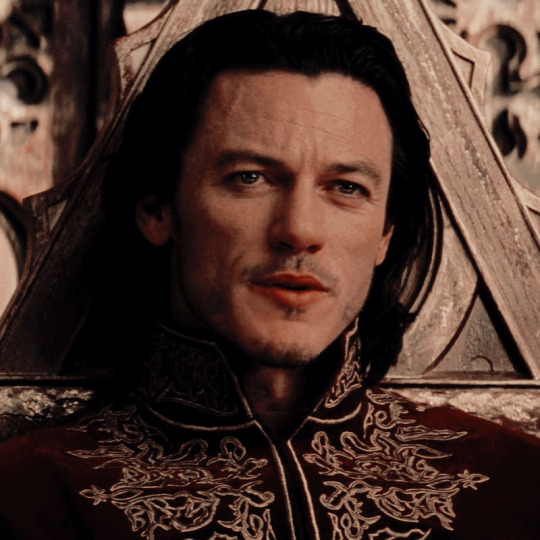






#luke evans#luke evans icons#vlad the impaler icons#vlad țepeș icons#vlad iii#vlad iii icons#vlad the impaler#vlad țepeș#psd icons#icons with psd#movie icons#movie#dracula untold#dracula untold icons#actors#actors icons
47 notes
·
View notes
Text
Count Dracula: An Everlasting Icon Between Legend and Modernity
Count Dracula, a legendary and iconic figure, has captivated the collective imagination for over a century. Originating from Bram Stoker's 1897 Gothic novel "Dracula," the character has become the quintessential vampire, influencing countless film, television, and literary adaptations. But what makes Count Dracula so enduring and relevant? And how can we reinterpret this figure through modern art? In this context, the "Transylvanian Dracula Count Vectorized Art Pack" offers a new perspective, blending tradition and innovation.
The Myth of Dracula
Count Dracula is partly inspired by the real Vlad III, also known as Vlad the Impaler, a 15th-century prince of Wallachia (now part of Romania). Vlad was infamous for his cruelty and use of impalement as a method of execution, making him an ideal inspiration for Stoker's bloodthirsty character. However, Dracula is not merely a reflection of Vlad; he is also a symbol of the hidden fears and desires of Victorian society, embodying themes of power, sexuality, and death.
The Evolution of Dracula in Art and Media
Since Dracula's debut, his image has been shaped by countless artistic representations. Classic films like the 1931 "Dracula" starring Bela Lugosi and the 1992 "Bram Stoker's Dracula" directed by Francis Ford Coppola have helped solidify the vampire's look and aura in the collective imagination. In these representations, Dracula is often depicted as an elegant and mysterious aristocrat, endowed with a dark and seductive charm.
"Transylvanian Dracula Count Vectorized Art Pack": A New Interpretation
The "Transylvanian Dracula Count Vectorized Art Pack" represents a modern and stylized interpretation of Count Dracula. Using vectorization techniques, this art pack reimagines the vampire in a way that blends classic elements with contemporary aesthetics. The distinctive features of the Count – the cloak, prominent fangs, aristocratic appearance – are maintained but revisited with surprising realism, despite being vector-based.
Features of the Art Pack
Realism and Elegance: Despite the vector technique, the portrait maintains a high level of realism, highlighting accurate details and a faithful representation of the character.
Minimalism without Colors: The absence of strong and contrasting colors lends a timeless refinement to the portrait, allowing focus on the details and technical mastery of the artwork.
Versatility: The vectorized art pack is highly versatile, usable in digital projects, prints, merchandise, and more, demonstrating how Count Dracula's image can adapt to modern design needs.
The Significance of Reinterpretation
Reinterpreting Dracula through vector art is not just an aesthetic exercise but also a way to keep a historical character alive and relevant. This reinterpretation allows for a renewed interest in the Dracula myth, making it accessible and attractive to new generations.
Count Dracula continues to be a figure of great fascination and relevance. Through works like the "Transylvanian Dracula Count Vectorized Art Pack," we can see how modern art can revisit and adapt classic myths, keeping their essence alive while giving them new life and modernity. The result is a fusion of tradition and innovation that celebrates the immortality of Count Dracula, both in legend and art.
#Dracula#VampireArt#GothicLiterature#HorrorArt#ModernArt#CountDracula#TransylvanianVampire#DraculaLegend#BramStokersDracula#DraculaVectorArt
3 notes
·
View notes
Text
lucifer and the HRE
the HRE if you arent a history nerd is the holy roman empire. which wasn't very holy, wasn't really roman and not really an empire. it was actually a nightmare state of thousands of proviences, lords and duchies all vying for power within the HRE.
what lucifer and the HRE has similar is that both rulers ruled over a highly dysfunctional state that barely worked and both now are probably have to deal with uruly and failed states forcing them back into order.
but its important to note that the HRE was a monster when it wasn't fighting itself it was a monster of an faction. holding some of the most professional and dangerous armies in Europe at the time. it also developed a lot of reforms brought the dark ages a bit more orderly and was overall just really powerful. it did bad and it did good it did eventually collapse however.
lucifer's kingdom is very much his HRE. it has all the potentials to be an incredibly powerful kingdom. it can lead forward reforms and become better then heaven itself one day.
But lucifer is like during the waning periods of the HRE. lucifer feels like any day it could all collapse and everyday he is fighting to keep it all together.
He knows if he goes vlad the impaler and just fights his icons he will defiantly destroy the kingdom. he's angry, he's tired, and he's had enough. he's utilizing a sorta pragmatic anger.
He's placing his authority upon his rings, placing his control directly ontop of his icons, he's not playing friendly but he isn't playing full dictator.
however he fears he is merely stalling for time maybe his harsh words will reach his icons and make them realize they are just ruining their kingdom. realize that hell can be the powerful utopia that heaven isn't. but he fears he is merely stalling to build a force a reputation garner the citizens to his cause...because he fears his friends are too far gone and civil war is coming...he just needs pride to be strong enough to face it.
2 notes
·
View notes
Text
Vlad the Impaler was such an icon of his time
I mean look at him, staring at those corpses with such "ugh, these hoes sipping on some dumb bitch juice" eyes

7 notes
·
View notes
Text
Happy Birthday 🎂 🥳 🎉 🎈 🎁 🎊 To You
The Iconic & Highly Regarded & Devilishly Handsome Welsh 🏴Actor & Singer Of The 21st Century In Cinema 🎥
Luke George Evans was born on Easter Sunday, 15 April 1979, in Pontypool, and brought up in Aberbargoed, the only child of Yvonne and David Evans. He was raised as a Jehovah's Witness, though he left the religion when he was 16 and left school at the same time.
At age 17, he moved to Cardiff, where he studied with singing coach Louise Ryan. In 1997, he won a scholarship to London Studio Centre, then in Kings Cross, London. He graduated in 2000.
He is a Welsh 🏴 actor and singer. He began his career on the stage, and performed in London's West End productions of Rent, Miss Saigon, and Piaf before making his film breakthrough in the Clash of the Titans 2010 remake. Following his debut, Evans was cast in the action and thriller films Immortals (2011), The Raven (2012), and the re-imagined The Three Musketeers (2011).
In 2013, Evans starred as the antagonist Owen Shaw in Fast & Furious 6, and also played Bard the Bowman in Peter Jackson's three-part adaptation of J. R. R. Tolkien's The Hobbit.
Evans also portrayed the vampire Dracula in the character's 2014 film origin story Dracula Untold.
Evans then portrayed Gaston in Disney's live-action adaptation of Beauty and the Beast (2017), psychologist William Moulton Marston in the biographical drama Professor Marston and the Wonder Women (2017), and the Coachman in Disney's live-action remake of Pinocchio (2022). He released his debut album, At Last, on 22 November 2019. In 2020, he starred in a three-part miniseries The Pembrokeshire Murders. In 2021, he had a main role in the Hulu drama miniseries Nine Perfect Strangers. He then starred in the black ops military series Echo 3 (2022).
He Sings Like Gaston & Does A Epic Masterpiece Of Playing Vlad The Impaler aka DRACULA 🧛♂️ & Many More Iconic & Popular Films 🎥 & TV Shows 📺 We all Have Seen & Adored Him In
Please Wish This Iconic & Highly Regarded & Devilishly Handsome Welsh 🏴 Actor & Singer Of The 21st Century In Cinema 🎥
A Very Happy Birthday 🎂 🥳 🎉 🎈 🎁 🎊
YOU KNOW HIM
YOU GOTTA LOVE HIM
& THE LADIES CANT GET ENOUGH OF HIM. ALRIGHT NOW GIRLS.
HE IS SPOKEN FOR
THE 1 & ONLY
MR. LUKE GEORGE EVANS 🏴 Aka Owen Shaw, Dracula 🧛♂️, Gaston, & Many More




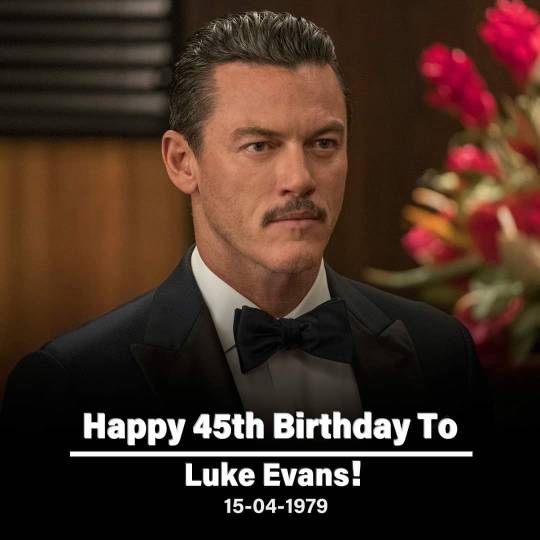
HAPPY 45TH BIRTHDAY 🎂 🥳 🎉 🎈 🎁 🎊 TO YOU MR. EVANS 🏴 & HERE'S TO MANY MORE YEARS TO COME #LukeEvans #FastandFurious6 #TheHobbit #DraculaUntold #BeautyandTheBeast #Scrooge
4 notes
·
View notes
Text
Welcome, ladies and gentlemen, to Stats Equalized!
The show where we equalize strength, speed, and durability to decide who would win a battle of hax, skill, and versatility.
This Week's Fighters...
Alucard vs Belos!
Conditions:
Pre-Shrodinger Alucard at Level 1 vs Season 1-2 Belos.
Scenario:
After successfully discovering a way back to the Human Realm, Belos is disgusted by the way human society has changed over the years and vows to find a way to rid humanity of all this "heathen filth". To start, he first targets the Protestant vampire hunter organization of Hellsing, viewing their practice of using the monsterous Alucard as a weapon as a personal insult as he thinks fellow Protestants should "know better" than to rely on such an unholy monster. Alucard views Belos with disgust as he watches the witch hunter try to slaughter his Master's guards.
"I've killed a lot of monsters in my day, but they were all at least aware of what they were. There is no creature more loathsome than a man who sacrifices his humanity for power and doesn't even realize what he's lost."
"For power? I am a witch hunter. Every sacrifice I've made was made was done to protect humanity from monsters like you."
"You want to see a monster like me? Look in the mirror. You're not the only beast to try gorging itself on souls."
"Whatever it takes to protect humanity from evil."
"Then perhaps I should educate you on what pure evil is capable of!"
Analysis: Alucard
Vampires. Some of the oldest monsters dreamed up by mankind. Ever since Bram Stroker's classical novel, we've seen numerous iterations of his iconic vampire king. None, however, can claim to be as deadly or as terrifying as Alucard, the undying enforcer of Hellsing.
Vlad Dracula was born as a tormented slave, spending most of his life being horrifically abused by his masters. When God refused to answer his prayers for mercy, Dracula decided to take life into his own hands. Becoming a vicious warlord, Vlad would impale countless thousands in his campaign to conquer all of his enemies, earning the moniker Vlad the Impaler. As he was to be executed, Vlad drank some blood off the grounds of the battlefield, forsaking his humanity and becoming an undead monster of the night.
Count Dracula's reign seemed unending, but eventually his bloody crusade was brought to heel by vampire hunter Abraham Van Hellsing. Respecting the level of strength and resolve that brought him to heel, Dracula swore loyalty to the Hellsing family name, becoming Alucard, the undying enforcer of the Hellsing Organization. A monster who hunts other monsters.
Alucard is quite easily the strongest vampire in the world. Alucard has killed thousands of monsters and millions of people over the course of his hundreds of years of undeath, not helped by Hellsing running experiments on him to make him even stronger. Even by the standards of his series, Alucard is less a vampire or moreso a vampire shaped Lovecraftian nightmare, and the most damning evidence of that is in his shapeshifting.
While Alucard does possess organs like a human does, he's in actuality made of a shadow-like substance that he can morph into any shape he desires. He can freely change his clothes, age, gender, and even sprout extra limbs. And if he encouters a particularly tough or tasty looking foe, he can shapeshift a giant dog monster out of his body, lovingly named Baskerville, to devour his prey whole and alive, keeping their mind, body, and soul trapped inside him forever.
What's more, while regular vampires can regenerate from getting shot to pieces, Alucard's is on a whole nother level. Decapitation, dismemberment, getting shredded with lead, or getting cut clean in half, Alucard comes back from it all. This is because Alucard has something his fellow vampires don't.... the souls of millions of his victims wriggling around inside him. Alucard has personally drank the blood of over 2 million people over the course of his life, absorbing their souls and memories in the process. Whenever Alucard takes a blow that would otherwise kill him, he uses up one of these souls to heal him from whatever did him harm. As such, Alucard in most fights just stands there with a shit eating grin while his opponents helplessly tear into him. He'll grow back whatever you do to him and your souls will replenish his stock just fine when you're done.
Don't think that this means he can't rip into you straight back. Alucard carries two massive handcanons longer than the average man's forearm, the .454 Casull and the Jackel, powerful enough to blast any vampire to pieces, while the silver bullets helpfully keep them from regenerating. He's a crack shot with them too, as with his Third Eye ability, he can enhance his senses to the point where he can hit bullseyes a kilometer away and see through any illusions you might cast to distract him. And if you're too far away for even that, Alucard can drag you back into range with telekinesis, which is powerful enough to lift an aircraft carrier out of the ocean and bring him the blood of everyone in London for him to drink. That's right, he drank London.
Obviously, this awe inspiring power needs to be controlled. As such, Alucard operates under 6 restriction levels. Levels 6 through 4 are for decimating your average, everyday vampires. 3 through 1 are when he starts getting serious, breaking out Baskerville, growing wings, and tearing you to shreds with multiple limbs. He even breaks out the powers he doesn't use that often, casting illusions to deceive his enemies.
Level 0 is for when he wants to end the world.
Upon activating Level 0, Alucard unleashes all of the souls in his arsenal as a sea of blood soaked zombie warriors to destroy everything in their path. If any of those souls happen to have powers, such as the aforementioned Rip Van Winkle, than the get to use them in his name, a true member of the Count's army.
However, while Alucard is at his strongest in this form, it's also his most vulnerable state. Namely, he can't regenerate from fatal wounds anymore. If one were to destroy his heart in this form, Alucard will die permanently. The man has admitted it himself.
Moreover, Alucard is supremely overconfident, to the point where he often just sits there laughing his ass of as he's torn to shreds. This overconfidence was once exploited by Schrodinger, a, um, Nazi German catboy who exists everywhere simultaneously. That was a sentence.
See, Schrodinger cannot die so long as he can recognize his own existence, as he is simultaneously alive and dead at all times. But, when Alucard inadvertently ate Schrodinger's soul, Schrodinger wasn't able to recognize himself anymore in the sea of souls within Alucard's body, causing Schrodinger, and Alucard by extension, to cease to exist.
Alucard, however, still lived. Even when reduced to absolutely nothing, Alucard was still aware. So, he simply spent the next 30 years killing all the millions of souls inside of him so he could return home to his master's side, undoing his own non-existence and gaining Schrodinger's powers in the process.
The fact that Alucard could survive and kill his other souls even while not existing, implies that even erasing Alucard's entire body entirely might not be enough to bypass his regeneration. If Schrodinger's powers weren't actively keeping him nonexistent, Alucard may be able to come back under his own power from being erased entirely.
Alucard's one true weakness is his longing for death. His biggest dream is that one day, a worthy human warrior will come to end his undeath for good. But, until then, he'll keep slaughtering monsters in his master's name. So, be weary all you who stalk the night, for when Alucard hears your screams, all Hell shall Sing.
Analysis: Emperor Belos
The Boiling Isles are not a kind or welcoming place. The seas and rain boil hot enough to melt a man's skin. Rainbows can turn you inside out. Monsterous beasts roam the land and the closest civilization floats on the corpse of a long dead Titan. Yet, the most dangerous threat any human can face is the mysterious masked witch who calls himself Belos... and the monsterous man he is underneath.
Philip Wittebane was your average 1600s American colonist when he and his older brother Caleb moved into the small town of Gravesfield. They both found themselves quickly adjusting to the town's local culture and practices, developing a taste for witch hunting at an early age as a result. This passion, however, was derailed in adulthood when the brother's happened upon an actual witch. The beautiful sorceress Evelyn who hailed from the mystical Demon Realm captivated Caleb with her beauty and magic, convincing the older Wittebane to follow her to home realm.
Believing his brother to be under a dastardly spell, Philip followed suite to save his brother, only to find the two happily married and expecting a baby. Caleb and Evelyn had genuinely fallen in love. Unable to reconcile his puritanical beliefs with the reality before him, Philip murdered his brother Caleb in a fit of rage and swore to annihilate all witches everywhere. No matter how many years it would take and how many brothers he would have to bury.
As a human, Philip could not use magic naturally by himself. Witches have bile sacks next to their heart that stores magic within them, but humans have no such thing, so Philip had to find alternatives. As such, he taught himself how to use glyphs, using the language of the Titan in written form to harness the magic emitted by his corpse. Other humans use glyphs written on pages or the environment to cast spells, but Philip took a bit of a shortcut. By carving glyphs directly into his own body, Philip could cast magic with nothing but a thought. Similarly, Philip found an exploit in the laws of magic that would allow him to cheat death itself. By feasting on the souls of a witches Palismen, or staff, Philip could live for hundreds of years, feeding off the magic of the thousands of souls trapped within his body.
However, these practices had disastrous side effects on his body, causing him to literally melt alive if he didn't regularly consume more and more Palismen, to the point of eating them to extinction. As such, Philip had a time limit on his goal, so he'd need a little help. Upon discovering the god-like being known as The Collector, Philip used their guidance to master all forms of magic and launch his master plan.
Philip took on the name Belos and set his thousand year plan into motion. Firstly, he would revive his brother as a "Grimwalker", seeking to mold this new version into a perfectly loyal witch hunter to fit Belos' own personal ideals. The corpses of thousands of failed attempts litter his layer, showing how little cares for a brother who doesn't obey his every whim. Then, Belos would create the coven system, convincing every witch in the realm to let him brand them with a coven sigil that seals away their ability to use any magic outside of their covens. Then, finally, he would enact the Day of Unity ritual, using the sigils to suck the life out of every witch on the Isles, killing all of witch kind.
To this end, Belos ironically became the most powerful witch of all time. He is known to have access to fire, ice, and light glyphs, allowing him to blast you with massive flames, create huge mounds of ice, and create floating orbs of light. He can create shields to protect himself from harm, manipulate plant life to his will, and telekinetically ragdoll you with just a thought. His telepathy can reach across his entire palace and his teleportation lets him cross the battlefield in seconds.
However, all of this power has come at a grievous cost. If Belos were to go too long without eating a Palismen and runs out of magic to sustain himselfwith, he'll melt into a rotting green slime monster. While this constant rot has given him the ability to stretch his limbs and shapeshift to a degree, the fact that he has such abilities at all shows how bad his condition has gotten. If reduced to his full on slime monster state, Belos will be forced to possess other beings to sustain himself, rotting away and consuming his hosts into lifeless skeletons for months until he's forced to find a new one. But, even then, he's remarkably difficult to put down, as he could still pull himself back together even after being smashed into a puddle by the Collector. Yet, in this state, his death is essentially garranteed. He'll run out of life to consume eventually and he'll eventually melt away into nothing. A perfect metaphor for the soulless parasite Philip Wittebane is under his benevolent fascade.
Throwdown Theme:
youtube
Throwdown Breakdown:
This matchup is very interesting. Because while both of these fighters have healing factors that make it impossible for them to kill each other, both of them are fighting on time limits, so to speak. Both of them can come back from things like complete liquification, but they require the souls inside of them in order to do so. Once Belos runs out of Palismen or Alucard runs out of souls, both of them will be left vulnerable, allowing the other to kill them.
So, do they have any options to bypass each other's regeneration before that happens? Well, Alucard's silver bullets won't work as Belos isn't a vampire, nor is he vulnerable to silver at all, but neither would Belos's petrification. Alucard could likely just go transparent and step out of it, or sever the limbs that have turned to stone and regrow them. Alucard will likely be taking more hits here than Belos will be, both because he doesn't dodge attacks in character unless he absolutely has to and because Belos's teleportation and telekinesis will make him a pain to get close to and land clean hits on. That's a problem, as I'm not sure who has more lives to burn here. I'm leaning Alucard, as he's roughly two hundred years older and canonically has two million souls inside him, but the body count of Belos's diet is implied to be huge. In that he's nearly driven all Palismen on the continent to extinction through his appetite and even when he has to go without in Season 2, several months pass before he starts showing long term side effects. As such, it would likely take months before these two came anywhere near killing each other. And hypnosis on Alucard's end also wouldn't likely cut it. Not only has Belos shown to have an immaculate control over his own mindscape, but the Palismen have been trying to escape and control it for hundreds of years and he's always been able to keep them suppressed before.
So, that leaves us with the big question. Slime Monster Belos vs Level 0 Alucard.
Here's how I see this fight going down. Both characters start out fighting in their usual way. Belos keeps his distance to attack with spells while Alucard regens through it and tries to shoot him up. Both characters switch tracks after seeing their normal methods fail, with Alucard throwing out Baskerville, only for Belos to teleport out of the way, while Belos uses petrification, only for Alucard to sever his freezing limbs and keep going.
At this point, both would take not of each other's shapeshifting abilities and regeneration and come to the same conclusion. "This guy has made himself immortal by eating souls just as I have". This changes Alucard's approach to the fight drastically.
Assuming now that Belos's immortality works like his does, Alucard goes level 0, knowing that the fight would take forever otherwise and assuming Belos will do the same to counter it, completely delighted at the opportunity fight a full on war. While the range and versatility of Belos's magic is impressive, he's going to struggle to reach Alucard through the wave of two million zombies and will begin getting overwhelmed. The rapid expenditure of his Palismen magic will force him into his slime monster state, especially as this fight takes place outside the Demon Realm and thus he'd only have Palismen to draw on to use magic at all.
At this point, Belos begins assimilating Alucard's army. Given that he was on the verge of assimilating the entire continent of the Boiling Isles as the Titan, I'd argue he could potentially do it and may absorb Alucard upon reaching him. But, that's when Alucard plays his trump card. Calling all of his souls back into himself while Belos is still attached, Alucard reabsorbs his army and Belos along with them, adding Philip's soul to the sea of souls within him to claim victory.
Unfortunately for the Witch Hunter, this fight was always going to come down to who was the hungrier monster.
This Throwdown's Winner is...

Alucard!
#fictional throwdown fridays#stats equalized#hellsing#alucard#the owl house#emperor belos#philip wittebane
24 notes
·
View notes